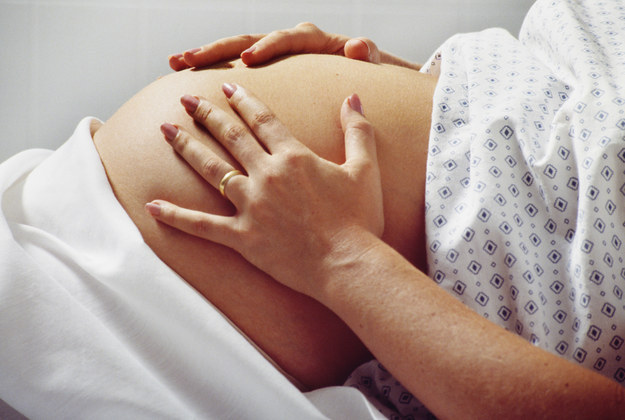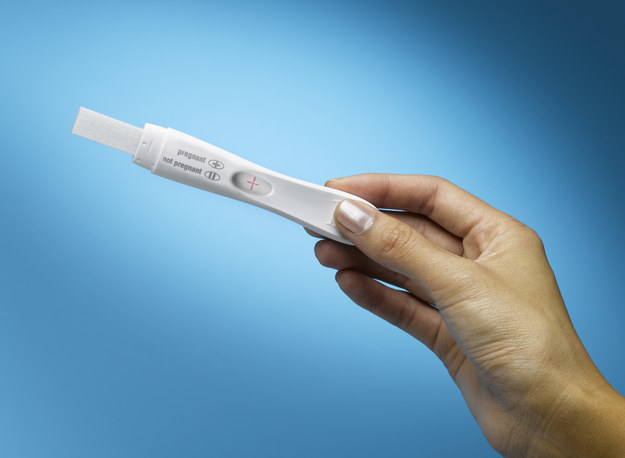After decades of criticism, the FDA is changing its rules about drugs that may cause birth defects
Jeffrey Hamilton / Getty Images
For most women who wind up in the emergency room, pregnancy is probably the last thing on their minds. It shouldn’t be.
Many drugs prescribed in the emergency room — such as antidepressants and seizure medications — come with risks of birth defects. And yet only about 1 in 5 women of childbearing age who are prescribed the drugs carrying the most stringent warnings get a pregnancy test, according to a recent survey.
“I was quite alarmed by that number,” pediatric emergency physician Monika Goyal of the Children’s National Medical Center in Washington, D.C., and lead author of the new study, told BuzzFeed News. “A pregnancy test is such a cheap, easy, and non-invasive test. So why not just do it?”
Every year doctors write almost 12 million prescriptions for drugs with birth defect risks for women of childbearing age, putting about 6% of U.S. pregnancies at risk, the study noted. About 10 million of those were administered in emergency rooms.
Goyal’s findings are part of a much larger problem surrounding drugs that may cause birth defects, medical experts told BuzzFeed News. After fielding complaints for decades, the FDA is only now beginning to reform its broken system of drug warnings.
The government’s old “pregnancy category” system — which labeled prescription drugs as “A,” “B”, “C”, “D,” or “X” depending on the strength of the evidence that they harm a developing fetus — had long drawn complaints from doctors and patients.
The main problem is that many drugs haven’t been studied specifically on pregnant women, or have only shown harm in a few animal studies, which meant that the letters were applied to a mixture of harmless and dangerous drugs. They were also rarely updated after new studies found drugs to be safer. This system left some doctors and women unconcerned about real dangers, while scaring others off drugs that would have helped them.
“If you can tell me anything about risk looking at these letter categories, I’m all ears. Because, I can tell you, you can’t,” FDA’s Sandra Kweder said at a December briefing on the new labeling policy.
The new rules, which begin to take effect on June 30, will replace the letter grades with specific guidance about the risks of a drug to a developing fetus and, for the first time, explicit instructions to order a pregnancy test before prescribing the drug.
The old letter classifications are typically, and wrongly, interpreted as safety grades, physician and malpractice attorney Armand Leone Jr. of Britcher, Leone, and Roth in Glen Rock, New Jersey, told BuzzFeed News. “When I was in school, I wanted an A. But a B was still pretty good. And I’d even take a C,” Leone said. But nobody wanted a D or an X.
What those letters really indicate, though, is the amount of information about the risks of a drug. So A means that studies in pregnant women had found no risks, whereas B and C drugs carry possible risks but only based on animal studies. D drugs had human data pointing to a definite birth defect risk while also offering medical benefits that might outweigh them.
That doesn’t necessarily mean B or C drugs are any safer than D ones, just that studies in people haven’t been done for them. “So we have a situation where we sometimes don’t know what we don’t know,” Leone said. “Until it’s too late.”

Jupiterimages / Getty Images
About 120,000 U.S. babies are born every year with a birth defect, roughly 1 in 33, according to the federal Centers for Disease Control and Prevention.
Smoking, drinking, obesity, and diabetes are leading causes, along with drugs linked to birth defects. These so-called teratogenic drugs most commonly cause heart problems and cleft palates.
The iconic example is thalidomide, which in the late 1950s was given to women worldwide to treat morning sickness. Thalidomide triggered an epidemic of deformed limbs and other serious birth defects in Europe, Australia, and Japan by 1961, leading to the reform one year later of drug safety laws in the United States.
“When drugs are approved, it is for a specific condition and it isn’t tested on pregnant women, for obvious reasons,” Leone said. “So physicians had to take their best guess,” he said. Sometimes that leads to an overreliance on the letter grades, making them see some D or X drugs as too dangerous, and B or C drugs as too safe.
Those letter grades confuse the findings in Goyal’s study, for example, because it only looked at X or D medications (those that have human data showing birth defect risks), pharmacologist Yusuf Kaplan of Terafar-Izmir Katip Celebi University in Turkey told BuzzFeed News. That means it included antibiotics that are harmless to pregnant women but nevertheless labeled in the D class because of outdated studies.
In a reply to Goyal’s study published last week by the same journal, Kaplan warned that telling pregnant women their prescription carries a birth defect warning might scare them off taking a needed antibiotic. They might “begin to think the drug class may have big risks [like] thalidomide, which is not the case with any antibiotic,” he told BuzzFeed News by email.
On the other hand, Goyal asked, what about times when a drug posed a risk and women didn’t hear about it before taking it? “Women may only find out they are pregnant a week later,” she said. In that case, they worry that they may have unknowingly harmed their child, triggering anxiety atop the usual stress that accompanies a new pregnancy. If they had known they were pregnant, they could have discussed the risks or taken an alternate drug, Goyal said.
More worrisome, Leone said, doctors might prescribe B or C class drugs to pregnant women for “off-label” uses different than the disease they are approved for.
A recent example is Zofran, an antinausea cancer drug given to pregnant women in off-label use that led to cleft palates and heart problems in babies. Zofran was in category B until 2013, when the FDA updated its warnings about the drug. As many as 1 million women a year took the drug until then.
The new pregnancy warning labels for the first time require drug companies to list registries collecting information on a drug’s side effects on pregnant women. That’s important, Leone said, because some adverse birth effects only become apparent after hundreds of thousands or millions of women have taken new drugs.
Ideally, pregnant women would take no prescription drugs, obstetrician Siobhan Dolan, an adviser to the March of Dimes, told BuzzFeed News. But that is not reality: “You’re always having to weigh the risks and benefits,” she said. A mother suffering from depression or seizures isn’t healthy for a developing child, either.
It will take three to five years for the new pregnancy warnings to appear on all prescription drug labels in the United States, Kweder said, because each one needs approval from FDA. That means the letter system will still be with us until 2018.
In the meantime, Dolan has some simple advice for women of childbearing age: When you start a new medication, take a pregnancy test. “More than half of all pregnancies are unplanned, after all.”


















